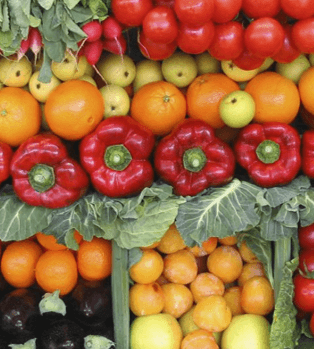How do you decide what to eat? No doubt that appearance and smell are important. But you might not realize that the words used to describe food might be even more persuasive than other sensory cues.
The implications for our health are considerable.
A clever study conducted at a university cafeteria told the story. Vegetables were served on alternate days with identical preparations, differing only in how they were described, either: 1) plainly; 2) healthfully in a restrictive way; 3) healthfully in a positive way; or 4) indulgently.
For example, green beans were described on some days as just “green beans,” on other days as “light ‘n’ low-carb green beans,” or “healthy energy-boosting green beans,” or, most indulgently, as “sweet sizzlin’ green beans.”
What difference do labels and food descriptions make?
As it turned out, the food descriptions had quite an impact—not only on how many diners chose to eat vegetables, but also on how much they consumed.
Vegetables described with indulgent language were chosen 25% more often then when described plainly and a whopping 41% more often when they were labeled with healthful and restrictive language. The conclusion was that messaging that emphasizes healthfulness of foods, especially using restrictive language, can be off-putting.
Conversely, the same items, described “indulgently,” were much more appealing: zesty ginger-turmeric sweet potatoes, twisted garlic-ginger butternut squash, and slow-roasted carmelized zucchini bites. Enticing, don’t you agree?
How are kids influenced by the way food is marketed?
Similar findings were observed with young children in another study. Children ages 8 to 11 years from diverse backgrounds were offered vegetables alternatively labeled as “x-ray carrots” or “food of the day.” Interestingly, there was no difference in number of children who selected both of these choices, but children actually ate more than twice as many vegetables when described with words like “x-ray carrots” compared to being labeled as the “food of the day.”
The bottom line is that when it comes to promoting healthy eating, marketing matters. Purveyors of junk food have long known that—and are much better at it than health enthusiasts who have arrived much later to the marketing game.
The twist is that food marketing that appeals to healthfulness doesn’t often appear to be helpful—in fact, sometimes it can be counterproductive. Rather, the message from these studies of children and young adults is that the path to healthier eating is paved with more creative, indulgent descriptions.
The need for creative messaging to promote healthy eating isn’t limited to children. For adults, maybe some visual messages would work better. Perhaps something like this…Carrots anyone?

References:
Indulgent Descriptions and Vegetable Consumption
Attractive Names and Increased Vegetable Intake in Schools
Interested in eating better for your own health?
Learn the essentials of good nutrition in our interactive, user-friendly nutrition learning program for the public.
Clinicians: Do you feel confident responding to patient questions about nutrition?
Take our award-winning condensed interactive nutrition CME—and learn what every clinician should know about nutrition.



